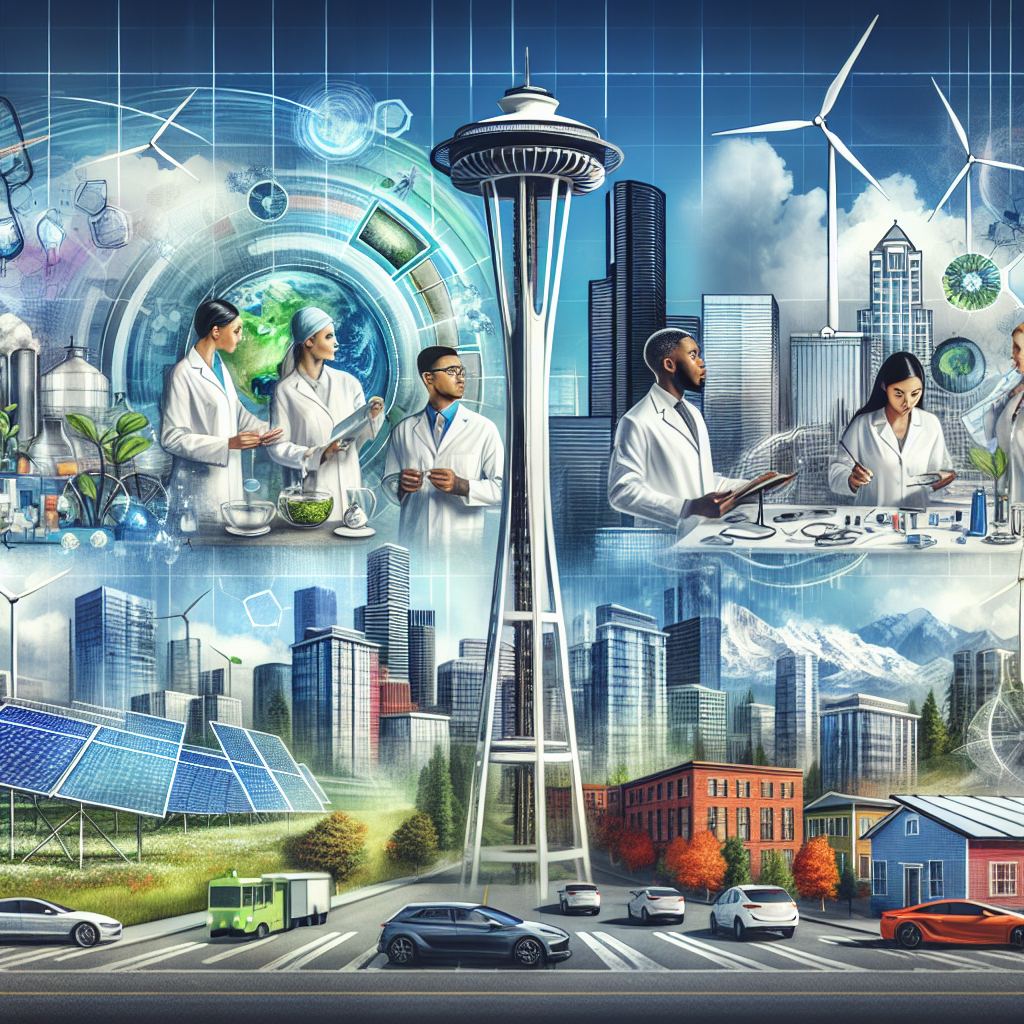
Start thinking more like an analyst.
Learn data science, natural language processing, and big data analysis essentials at your own pace.
Unprecedented Carbon Surge Threatens Global Climate Goals
Unprecedented increases in atmospheric carbon dioxide levels were recorded last year, marking the fastest rise ever seen. This rise is in direct contradiction with the objectives stated in the Paris Agreement, which aims to keep global warming below 1.5 degrees Celsius.
Scientists have noted that current carbon levels are over 50% higher than they were before the industrial revolution and the widespread burning of fossil fuels. This is a cause for serious concern as it implies a significant imbalance in the world’s carbon cycle.
The Intergovernmental Panel on Climate Change (IPCC) has been closely monitoring the situation. However, the rate of carbon increase is exceeding their predictions, which were carefully formulated to prevent global temperature rise exceeding 1.5 degrees Celsius.
The accelerated pace of carbon emissions can be traced back to several key factors. Fossil fuel use remains a significant contributor, despite worldwide efforts to transition to renewable energy sources. In addition, natural disasters such as wildfires and droughts have further exacerbated the situation. Changes in agricultural land use, often linked to deforestation, have also played a role in the increase in carbon emissions.
In 2024, the UK weather service reported an unprecedented annual increase in atmospheric carbon dioxide levels. The surge was so significant that it exceeded their own estimates, highlighting the severity of the situation.
The rise in CO2 was primarily attributed to the burning of fossil fuels and widespread wildfires. Additionally, the weakening of the Earth’s natural carbon sinks, such as forests and oceans, which absorb CO2 from the atmosphere, has also contributed to the surge.
The scientific community has sounded the alarm, warning that these growth rates could make it impossible to limit global warming to 1.5C. Such a scenario could lead to severe climate change consequences, such as more frequent and severe weather events, sea-level rise, and loss of biodiversity.
Predictions for a cooler 2025 may offer some hope, but the escalating levels of atmospheric greenhouse gases pose a persistent threat. To halt global warming completely, the rise in these gases needs to be not just halted, but reversed. The world’s nations must rally together to address this urgent crisis, taking decisive action to curb carbon emissions and protect our planet for future generations.
Science4Data is committed to cut through greenwashing and measure real impact. Join the journey to a sustainable future. Your actions matter.
Seattle’s Rise as a Leading Hub for Climate Tech and Clean Energy Innovation
Seattle is emerging as a promising hub for climate tech and clean energy tech companies, thanks to its unique combination of infrastructure, skilled workforce in aerospace and tech, clean energy grid mix, progressive climate policies, and a strategic geographic location. The city is harnessing these strengths to attract and foster the growth of businesses in the sector.
The recent launch of the Seattle Climate Innovation Hub signifies a significant step in this direction. This initiative is a joint effort between the University of Washington CoMotion Labs, Seattle’s Office of Economic Development, VertueLab, and 9Zero. The hub is focused on supporting early-stage entrepreneurs in the climate technology sector, providing a nurturing ecosystem for their growth and development.
The Seattle Climate Innovation Hub has a broad scope, focusing on key areas such as renewable energy generation, energy storage, grid management solutions, and transportation opportunities. The latter includes electric vehicle charging infrastructure and sustainable aviation and maritime fuels, areas of significant potential growth.
Financial support from federal, state, and city funding has been instrumental in reducing emissions in overburdened communities in Seattle and promoting local clean energy jobs. A notable investment of $2.2 million has been made in the Clean Energy Training and Career Pathways program, reflecting the city’s commitment to fostering a skilled workforce in the sector.
The newly established incubator in Seattle is a product of a public-private partnership and aims to position the city as a leader in climate technology. By attracting top innovators from across the country, the city aims to become a hotspot for climate tech innovation.
The Seattle Climate Innovation Hub will be housed on the 15th floor of the Financial Center building. It will share a common area and kitchen with 9Zero, VertueLab, and UW’s CoMotion Labs’ Climate Tech Incubator, while also maintaining separate offices. This setup will foster a collaborative environment for the companies housed in the facility.
CoMotion Labs is currently forming its first climate tech cohort and is actively recruiting founders for an eight-month program starting this spring. The program will offer mentorship and access to a network of climate tech professionals among other resources, providing invaluable support to budding businesses.
Despite a decrease in investments in the climate tech sector over the past three years, the Seattle Climate Innovation Hub is expected to provide critical support to climate tech startups. The hub will help these businesses navigate the challenging funding environment and position them for success in the burgeoning climate tech sector.
Science4Data is committed to cut through greenwashing and measure real impact. Join the journey to a sustainable future. Your actions matter.
The Economic and Humanitarian Impact of Los Angeles’ Record-Breaking Wildfires
Firefighters engaged in an uphill battle against multiple fires in Los Angeles, projected to become the most expensive blazes in US history. The fires have been fueled by Santa Ana winds, have burned approximately 62 square miles (160 sq km) thus far.
Tragically, the fires have already resulted in at least 24 fatalities, displaced thousands of residents, and obliterated over 12,000 structures. These circumstances have necessitated the evacuation of approximately 100,000 people, causing a massive upheaval in the affected communities.
The situation is anticipated to worsen due to high wind speeds, with potential gusts reaching up to 65mph (105km/h) in mountainous areas. The National Weather Service has issued a warning about a “particularly dangerous situation” due to the severe fire conditions. These conditions pose a significant threat to the containment efforts and may potentially exacerbate the already dire situation.
The economic toll of these wildfires is staggering. AccuWeather estimates that the economic losses from these wildfires could range between $250bn and $275bn. If these figures hold, the wildfires, which have already burned over 40,000 acres, could become the costliest wildfire disaster in US history. These statistics are based on early damage assessments and economic loss estimates.
The widespread devastation has also had substantial implications for the insurance landscape in the affected regions. Insurance companies have started refusing to renew policies, a move that has seen State Farm rejecting nearly 70% of renewals in a ZIP code central to Pacific Palisades last year. This trend may potentially leave many homeowners without the much-needed financial safety net as they grapple with the aftermath of this disaster.
The Los Angeles wildfires have not only brought about an unprecedented loss of life and property but also promise to leave a significant dent in the US economy. The projected economic losses and the ripple effects on the insurance sector underscore the severity of this disaster. As the firefighters continue to fight the blazes, the hope is that the situation improves sooner rather than later.
Science4Data is committed to cut through greenwashing and measure real impact. Join the journey to a sustainable future. Your actions matter.
The Rising Prevalence of Valley Fever amid Climate Change
Marc Evans, a retired broadcast industry lawyer, was known for his love of gardening. As the old saying goes, ‘life happens while you’re busy making plans,’ and for Evans, life certainly took an unexpected turn. In the spring of 2021, he relocated from Seattle to Arizona. Little did he know, his new hobby in a new state would expose him to a soil-dwelling fungus, Coccidioides, while gardening in his niece’s backyard.
Evans soon began to experience a decline in his health. Symptoms such as shortness of breath and night-time hallucinations crept up on him, which he initially concealed from his wife. Given his pre-existing diabetic condition and history of heart attacks, he had reasons to worry. His deteriorating health led him to the Mayo Clinic Hospital, where he was diagnosed with Valley fever. This respiratory disease, caused by inhaling Coccidioides spores, had infected his left lung and was showing signs of causing meningitis.
Despite receiving high-dose antifungal medication, Evans’ condition worsened. The stress of the disease on his already weakened heart led to multiple organ failures. His case is not an isolated one. Valley fever, a common disease in the Southwest, has seen a sharp increase in cases over the years. From about 2800 per year at the turn of the century, the number has surged to about 20,000 in 2023.
This increase in Valley Fever cases is not just a simple coincidence. Factors such as population growth, geographical spread of the fungus, and a warming climate have all contributed to the rise of this disease. Climate change, in particular, has heightened the frequency of natural hazards like dust storms and droughts. This is correlated with a greater prevalence of Valley Fever, a potentially lethal respiratory fungal infection.
The number of Valley Fever cases in regions such as California and Arizona have increased fivefold from 2001 to 2021. Given the current trend, it is predicted that the prevalence of this disease will continue to rise due to changing climate conditions. This potential public health crisis calls for further research to better understand the relationship between Valley Fever, dust, and climate change.
Particularly in endemic states, this understanding is crucial for environmental managers and medical professionals. It will aid them in designing effective mitigation strategies and protecting public health. For now, the story of Marc Evans serves as a stark reminder of the potentially lethal consequences of this often overlooked disease. His story highlights the urgent need for more research, increased public awareness, and proactive measures to combat the spread of Valley Fever.
Science4Data is committed to cut through greenwashing and measure real impact. Join the journey to a sustainable future. Your actions matter.
Climate Change’s Double Threat – Wildfires in the West, Storms in the East
The Los Angeles wildfires currently ravaging the landscape are believed to be triggered by the potent combination of strong Santa Ana winds and prolonged periods of drought. These winds, which typically occur between September and May, have recently reached an alarming velocity, gusting at speeds of up to 100mph (160km/h), significantly contributing to the rapid spread of the wildfires.
Adding fuel to the fire, so to speak, is the drought that has been afflicting Southern California. This has resulted in the vegetation in the area becoming extremely dry, thereby serving as additional fuel for the ongoing wildfires. Despite a recent easing of the winds, gusts of up to 70mph are still a very real possibility, a fact that is worsening the already compromised air quality due to the spreading smoke from the fires.
Firefighters are finding it particularly challenging to control the Palisades Fire in Los Angeles. Its intensity has been heightened by the Santa Ana winds and the dry conditions, a scenario that has been exacerbated by the global phenomenon of climate change.
In stark contrast, the eastern U.S. is currently grappling with a major winter storm. This has led to widespread closures and power outages due to the interaction of cold air masses with moist air from the Gulf of Mexico.
These two weather events – the wildfires in the west and the winter storm in the east – are not random occurrences. They are influenced by large-scale atmospheric patterns such as the jet stream and phenomena like La Niña conditions and atmospheric blocking.
What is significant about these severe weather events is that they are triggered by different causes, but are both influenced by climate change. This underscores the urgent need for increased weather resiliency and further advancements in weather science. It is clear that understanding and addressing the effects of climate change should be a priority if we are to have any hope of mitigating the impact of these destructive weather events in the future.
Science4Data is committed to cut through greenwashing and measure real impact. Join the journey to a sustainable future. Your actions matter.
Los Angeles Wildfires – A Growing Threat at the Crossroads of Climate Change and Urban Sprawl
The recent Eaton Fire in the San Gabriel Mountains has brought attention to the vulnerability of communities in the Los Angeles area to wildfires. Crystal Scott, who grew up playing in the now-destroyed playground in the mountains, experienced firsthand the devastating impact of wildfires on the natural landscape she once cherished.
One of the contributing factors to the increasing risk of wildfires in Los Angeles is the urban and suburban sprawl that has encroached further into wild areas. As humans continue to develop and expand into these natural landscapes, the likelihood of fires igniting and spreading into neighborhoods also increases.
Climate change has exacerbated the intensity and frequency of wildfires in the Los Angeles area. Rising temperatures, prolonged dry spells, and strong winds have created ideal conditions for fires to ignite and spread quickly, making containment efforts challenging for firefighters.
The history of intense fires in the West has made the destruction caused by wildfires in Los Angeles somewhat expected. The wildland-urban interface in Los Angeles, where human development meets natural landscapes, has become the epicenter of devastating wildfires, leading to catastrophic outcomes for residents and wildlife alike.
Debates over suburban sprawl and forest management have intensified in the wake of Los Angeles wildfires, sparking political controversy and discussions on how to prevent future disasters. The influence of climate change on wildfire activity in southern California is evident, with extreme weather events and rising temperatures turning the region into a tinderbox waiting to ignite.
As Los Angeles continues to grapple with the consequences of human-nature interactions and the increasing risk of wildfires, it is clear that immediate action is needed to address the underlying issues and prevent further devastation in the region.
Science4Data is committed to cut through greenwashing and measure real impact. Join the journey to a sustainable future. Your actions matter.








